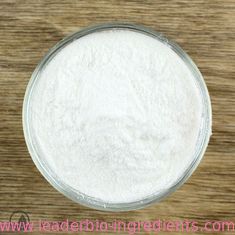
China Northwest Factory Manufacturer Vitamin K3 Menadione Nicotinamide Bisulfite (MNB) Cas 73580-79-0 For stock delivery
-
Purity99.9%
-
UseHealth Care
-
OriginChina
-
Package1KG/Tin 25KG/Drum*Carton
-
ManufacturerXI'AN LEADER BIOCHEMICAL ENGINEERING CO.,LTD
-
Place of OriginCHINA
-
Brand NameLeader
-
CertificationISO,GMP,SGS,HALA,KOSER,HACCP
-
Model NumberLD
-
Minimum Order Quantity25KGS
-
PriceNegotiate
-
Packaging Details25KG/Drum
-
Delivery Time2-3 working days
-
Payment TermsWestern Union, MoneyGram, T/T, L/C
-
Supply Ability10MTS/Month
China Northwest Factory Manufacturer Vitamin K3 Menadione Nicotinamide Bisulfite (MNB) Cas 73580-79-0 For stock delivery
| Menadione sodium bisulfite Basic information |
| Product Name: | Menadione sodium bisulfite |
| Synonyms: | VITAMIN K3 SODIUM BISULFITE;1,2,3,4-tetrahydro-2-methyl-1,4-dioxo-2-naphthalenesulfonicacidsodiumsalt;1,2,3,4-tetrahydro-2-methyl-1,4-dioxo-2-naphthalenesulfonicacisodiumsalt;2-METHYL-1,4-NAPHTHOQUINONE SODIUM BISULFATE;2-METHYL-1,4-NAPHTHOQUINONE SODIUM BISULFITE;MENADIONE SODIUM BISULFITE;Menadione sodium hydrogen sulfite;2-Methyl-1,4-naphthoquinone sodium bisulfite trihydrate |
| CAS: | 130-37-0 |
| MF: | C11H9NaO5S |
| MW: | 276.24 |
| EINECS: | 204-987-0 |
| Product Categories: | Pharmaceutical intermediates |
| Mol File: | 130-37-0.mol |
| Menadione sodium bisulfite Chemical Properties |
| Melting point | 121-124°C |
| storage temp. | −20°C |
| solubility | H2O: ≥50mg/mL, clear, colorless to faintly yellow |
| EPA Substance Registry System | Menadione sodium bisulfite (130-37-0) |
| Safety Information |
| Hazard Codes | Xi,N |
| Risk Statements | 36-50/53-36/38 |
| Safety Statements | 26-61-60-24/25 |
| RIDADR | UN 3077 9 / PGIII |
| WGK Germany | 3 |
| MSDS Information |
| Provider | Language |
|---|---|
| SigmaAldrich | English |
| Menadione sodium bisulfite Usage And Synthesis |
| Chemical Properties | white powder |
| Originator | Kavitol,Lannacher Heilmittel |
| Definition | ChEBI: An organic sodium salt that is the monosodium salt of menadione sulfonate. A synthetic naphthoquinone without the isoprenoid side chain and biological activity, but can be converted to active vitamin K2, menaquinone, after alkylation i vivo. |
| Manufacturing Process | The 2-naphthalenesulfonic acid, 1,2,3,4-tetrahydro-2-methyl-1,4-dioxo-, sodium salt, trihydrate can be prepared by mixing the 2-methyl-1,4- naphthoquinone with the bisulphite salt in the presence of water. Ordinarily gentle warming of the aqueous mixture is preferred to facilitate solution. The mixture of 2-methyl-1,4-naphthoquinone (250 mg; 1 molar equivalent); sodium bisulphite (149 mg; 1 molar equivalent); distilled water (250 ml) or 2- methyl-1,4-naphthoquinone (250 mg; 1 molar equivalent); potassium bisulphate (349 mg; 2 molar equivalent); distilled water 250 ml may be used. These examples representing preferred ratios of ingredients are merely illustrative and are not to be interpreted as limiting. The bisulphite addition compounds have been found to be stable in sunlight and also to be heat stable. Tests, for example, carried out in ampoules have shown aqueous solutions of the compounds not to be decomposed after exposure to a month's sunlight, while other tests have shown the solutions of such compounds to retain their original potency (a) when stored in an oven at 60°C for 15 days or (b) when sterilized at 15 pounds for 0.5 hour in an autoclave at about 122°C. These properties emphasize the radical differences between the stable salts and the properties of 2-methyl-1,4-naphthoquinone, the characteristic instability of which is illustrated by its sensitivity, i. e., decomposition, when exposed to light. The bisulphite addition compounds have a vitamin K activity equal to that of the 2-methyl-1,4-naphthoquinone contained in the molecule. The compounds, although suitable for oral administration, are particularly adaptable in aqueous solution for parenteral administration in the treatment of hemorrhagic conditions. |
| Brand name | Hykinone (Abbott); Klotogen (Abbott). |
